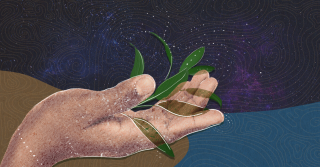
National Centre for Collaboration in Indigenous Education: Introduction to land-based education
What is Land-Based Pedagogy?
According to Danielle Cherpako
Making Indigenous-led Education a Public Policy Priority: The Benefits of Land-Based Education and Programming (2019)
“Land-based learning typically uses an Indigenized and environmentally-focused approach to education by first recognizing the deep, physical, mental, and spiritual connection to the land that is a part of Indigenous cultures. Each land- based learning program is unique, and therefore some may use different titles, or may not focus on Indigenous knowledge at all.” (p.3)
Land-Based Learning
What land-based education is and is not
Indigenous land-based education has implications for science, culture, politics, language, environmental stewardship, land rights, reconciliation—and the future of the planet. The UNESCO Canadian Commission article Land as teacher: understanding Indigenous land-based education (2021) walks you through what it is - and what it is not.
What can this look like?
- In this article see how Brenda and Joyce Germain’s Kindergarten Mi'kmaw immersion program aims to keep the language strong in Listuguj, Que. This Forest Kindergarten program brings kids outdoors, with language revitalization at the forefront.
- Learning the Land: Inquiry-based learning, Land-based Learning, Treaty education, is aligned with Treaty Education Alliance’s mission of serving and supporting each of the member First Nations in advancing our Inherent and Treaty Rights to Education. They describe this program as “more than an outdoor education program: It is about learning from the land and understanding our connection to it.” See examples of learning
- The National Centre for Collaboration in Indigenous Education shares Stories of land-based learning in Indigenous communities. “The stories in this category are about harvesting, hunting, trapping, fishing, medicine gathering and teachings, learning bush survival skills, traditional land-based scientific knowledge and culture and are aimed at educators, students, youth, and adult community members, and often involve Elders and Knowledge Keepers as teachers.” Access the stories
- According to the First Nations Education Steering Committee (FNESC/FNSA) “One way of integrating Indigenous ways of knowing into a science unit is to provide students with an opportunity to interact with the land in some way” Access suggestions for how that can be achieved for a secondary science class
- The H’a H’a Tumxulaux Outdoor Education Program is a land-based project of the Kootenay-Columbia Learning Centre in Trail, B.C. Learn more about their program and access guidelines for crafting and leading a land-based program.
How to Learn More About Land-Based Education
Inuit Teacher Education on the Land (through OFNIE; with Andrea Brazeau)